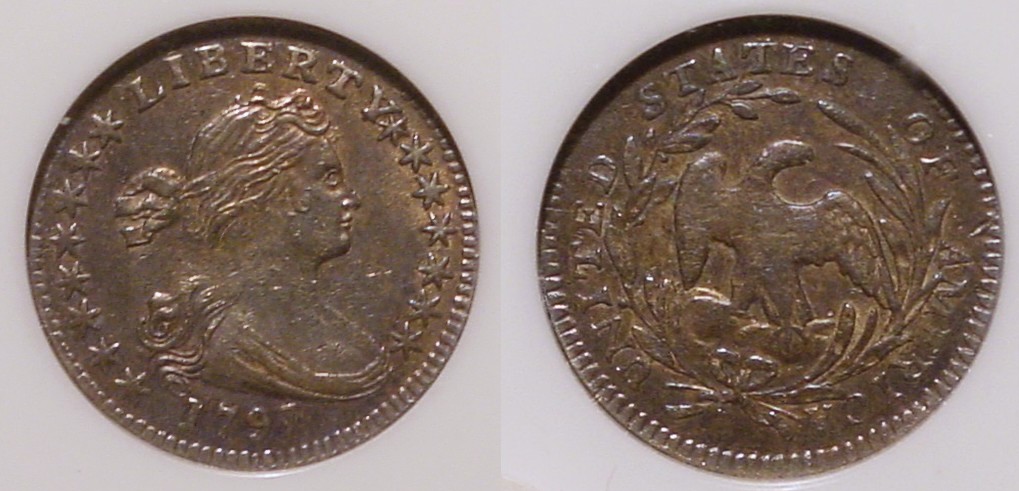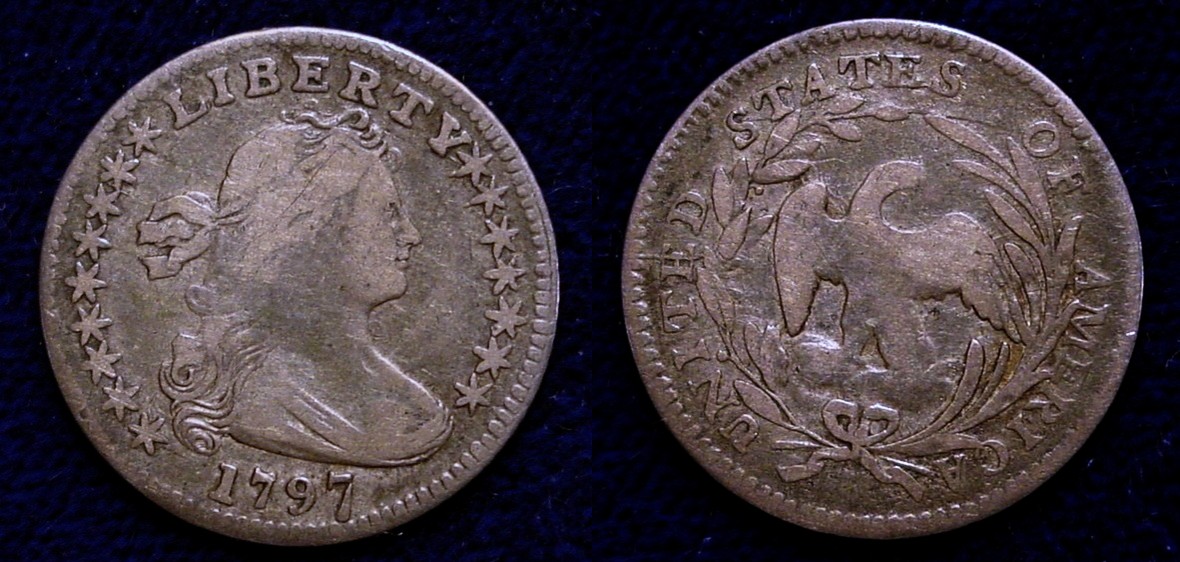Howdy, Stranger!
It looks like you're new here. If you want to get involved, click one of these buttons!
Quick Links
15, 16 and 13 Stars on 1797 Half Dimes
I have been fascinated by the early half dimes since I was in high school. The trouble is they have always been expensive, and there was no way I could have afforded one on my allowance and then hourly summer jobs. When I was in college a spotted an 1800 half dime that was in decent shape for $300. I actually went back to my apartment and figured out that I could buy it if spend every dollar I had. Fortunately I resisted the temptation.
One group of three pieces that long been of interest to me is the 1797 half dimes with 15, 16 and 13 stars. Although other U.S. coins from this period have different star counts within the same year, the half dime is only one that has all three.
Tennessee became the 16th state to join the Union on June 1, 1796. To celebrate that, a 16th star was added to the obverse of the new dies for silver and gold coins at the Philadelphia Mint. Given that, why is there a 1797 half dime with just 15 stars?
The answer is that the dies were made ahead of time. The Robert Scot, the Chief Engraver at the first mint, was not about to throw away a perfectly good die because of fairly small design change. The dies were often made with the first three digits “179” entered, and the last digit was dropped in just before the die was put into service. The evidence of that is shown on the four 1797 half dimes shown below. Note that the style of the two “7s” in the date often does not match.
Robert Scot finally came to the logical conclusion that he could not continue to add more stars as each state came into the Union. He cut them back to 13 which symbolized the original 13 states. This change in policy resulted in the 13 star variety for the 1797 half dime. Although you might not guess it from the Red Book listing, this coin is much rarer than the other three pieces. Russell Logan and John McCloskey rated it as an R-6 in their die variety book, which translates to 13 to 30 examples known. I agree with that observation.
The first 1797 dated half dimes had 15 stars (variety LM-1) on the obverse. It does not show up clearly in this photo, but the second "7" in the date is smaller than the first one and does not have a serif on the upper bar of the digit. This is the most die variety for the year with an R-3 rating. (201 to 500 known)
The first variety (LM-2) of the 16 star half dime was paired with the same reverse used to strike the LM-1 coins. The eagle on this reverse never comes well struck. The first coin is NGC AU-53 in an "old fatty" holder. This piece is now in an NGC VF-20 holder, although my grade in Fine-15. I used to say that this is the finest Fine-15 graded 1797 half dime on the planet. These small coins did not fare well in circulation. Most of the well used examples are damaged, often bent.




Comments
The Second variety (LM-3) of the 16 star half dime was paired with a new reverse. This "tall eagle" was much more sharply struck and attractive. The rarity rating is R-5, 31 to75 known. PCGS graded this coin au-53.
The 13 star 1797 half dimes were issued last. This is by far the rarest of the four varieties. These coins appear on average only one or two times a year in the major auctions. The rarity rating is R6, 13 to 30 known. This coin is in an NGC VF-35 holder. My grade is VF-25.
I've wanted a nice 16 star one for a long while. It's not a dream coin but as a native Tennesseean I've always wanted one because it was the last to get a star on coins before they changed it to 13. My gold dollar collection takes precedence but if I get some unexpected funds this might be what I get.
I appreciate and have read your entries relating to history, including this and the ones on the quarter eagles.
Which of the photos are of your coins?